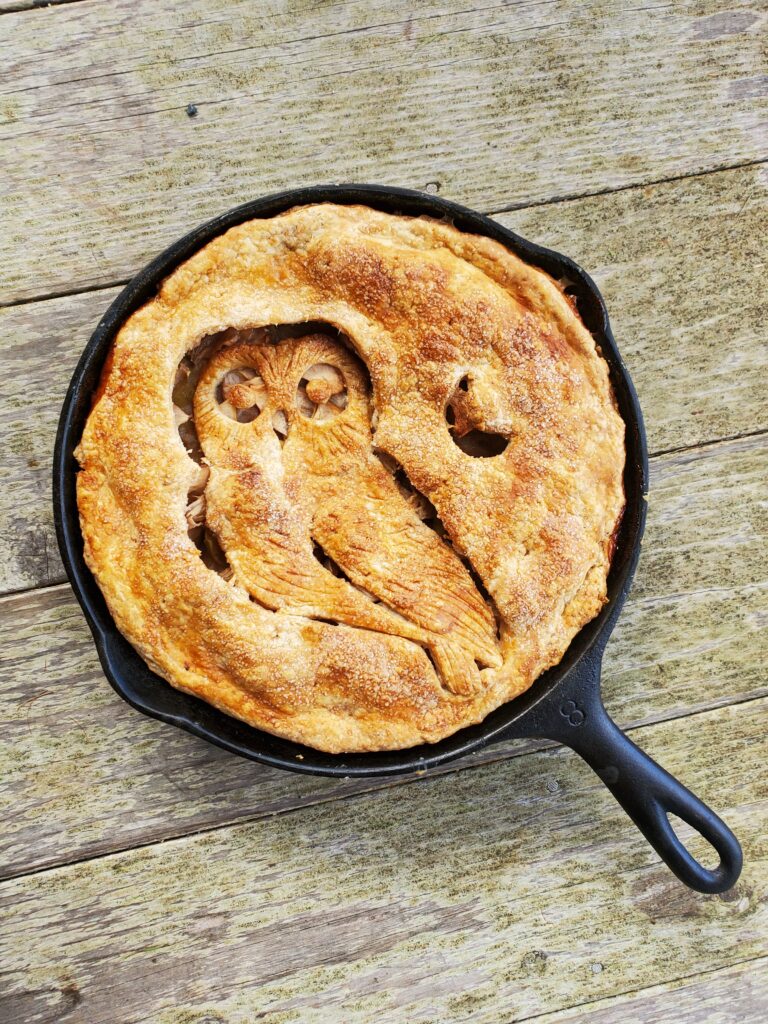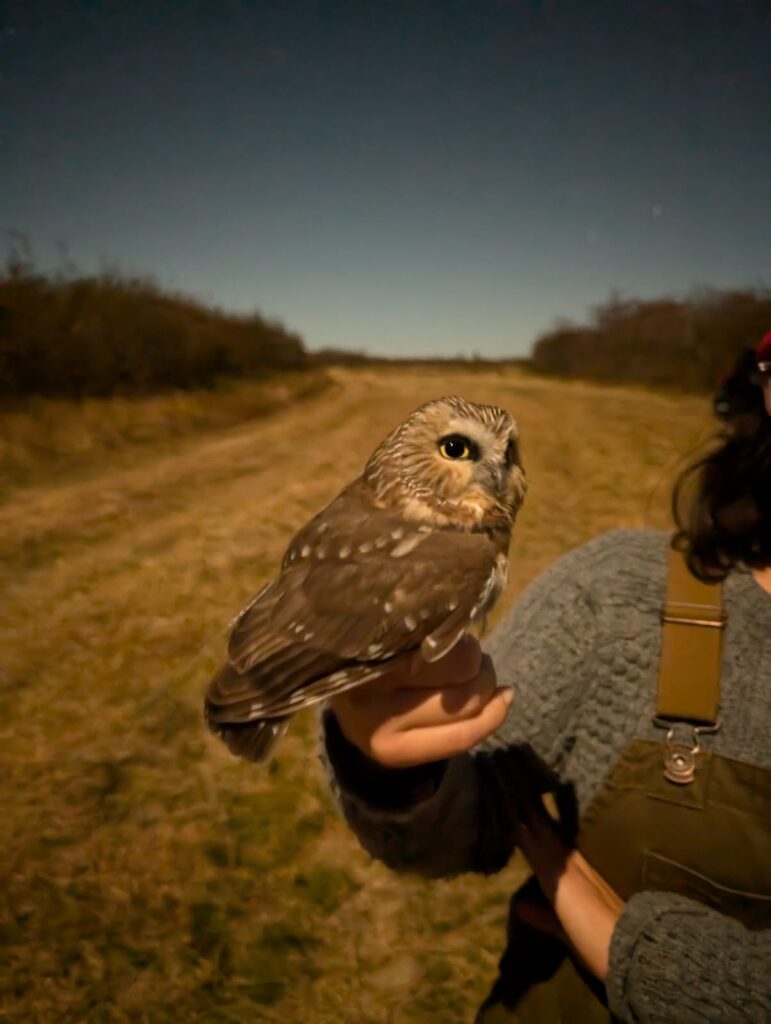28 October 2024
The week started out slow, with birds trickling in bit by bit, night by night. Mostly south and west winds resulted in just a handful of birds each night in the beginning of the week. One noteable bird was a “local” recapture on Sunday, which happened to be the last bird we banded on Friday night! Considering there was a rainstorm last Saturday, this little saw-whet must have been waiting it out in the woods all that time, only to fly into our nets again. We released it and like all the others, it fluttered across crisp starry skies and onwards along its migration route.
The winds and weather finally seemed to shift in our favor by Thursday. We almost thought it would be windy to open, but thankfully the gusts were directily from the north, which prevented the saw-whet nets from being affected much at all. We did close the smaller set of nets that target Long-eared Owls and Boreal Owls. Being in a more open area, this set of nets tends to be affected by wind more – so if things are on the windy side, we close them up for safety reasons. Thursday proved to be an evenful night not necessarily in bird numbers, but more so in the tagging project that we are contributing to! As mentioned in a previous blog post, Aaron Coolman (2021’s Resident Bander) is in the middle of his Master’s project, which involves putting motus nanotags out on saw-whets at various Project Owlnet banding stations. Considering that we’re only tagging adults (birds older than hatch-years), AND that adults are in the minority for the age of birds that we’re catching, it’s exciting for to catch birds suitable for tagging. Even further, male saw-whets are also in the minority for what we catch. So, a male adult saw-whet? Pretty rare. We have a few tags designated for them – lighter to account for the male’s smaller size – and have been hoping to put them on suitable birds. Lucky for us, we got two adult males on the same night! We put out 3 tags overall Thursday, getting us even closer to our goal. As mentioned in a previous blog post, it’s exciting to think what kind of information we’ll be able to learn from these birds and the paths they take moving forward!
If Thursday was the night of the adults, Friday was the night of the hatch-years. With more favorable winds, we got 19 saw-whets: all “babies!” The difference between the two nights and the birds we caught fascinated us. We found ourselves wondering what connections could possibly be made, why these birds decided to travel when they did, what characteristics might drive migration decisions, etc. Interestingly, the hatch-years also came with quite a few hippoboscids that we collected. Hippoboscids are parasitic flat flies that feed on the blood of our owls – grabbing not only a bite to eat, but also hitching a ride. How far have these flat flies traveled, only to end up in our vials? So many fun thought experiments for us to ponder while working in the dark of the night.
Saturday night brought good wind direction, but not good wind speeds. Too strong of speeds aren’t favorable for migrating saw-whets, as they aren’t the strongest fliers. As with most nights on the windier side, we kept the more exposed nets that target Long-eared Owls and Boreal Owls. Still, we caught 4 more owls than we had before!
A fun bonus for the week was being able to snap a photo of two saw-whets side by side, male and female. On average, males are significantly smaller than females. For the two in the photos attached to this post, the male was 78g, while the female was 105g. You can really see the size difference in these photos, and we could certainly feel the difference in our hands!
We all can’t believe the season is almost over – pretty much just 1 week left! We’re hoping we can get a solid number of birds in before things wrap up. Wish us luck!
- Juliana Ramirez
Share

A male and female Saw-whet (note size difference). The male (on the left) has been fitted with a nanotag.
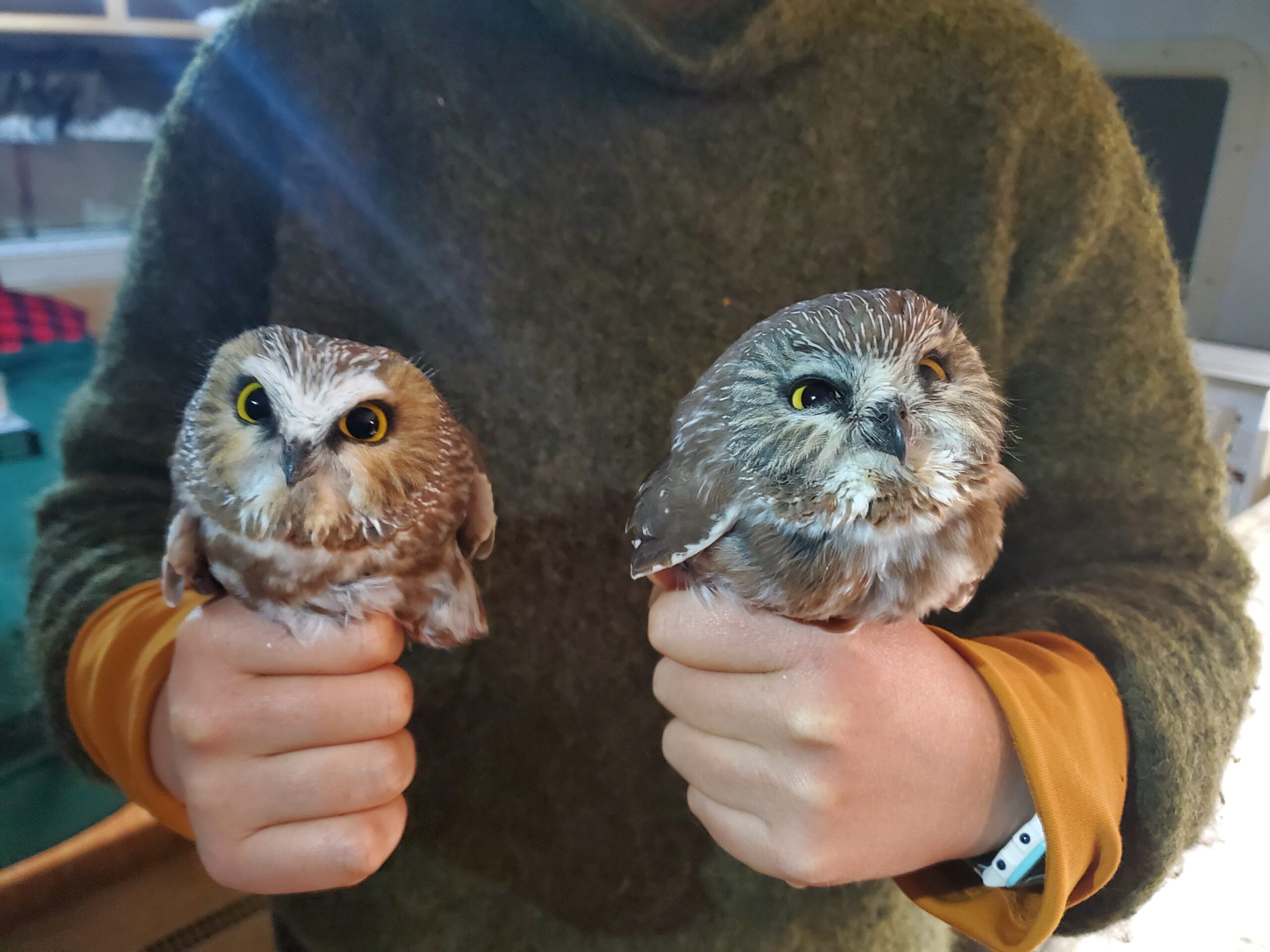
The same male and female Saw-whets. Male on the left, female on the right.
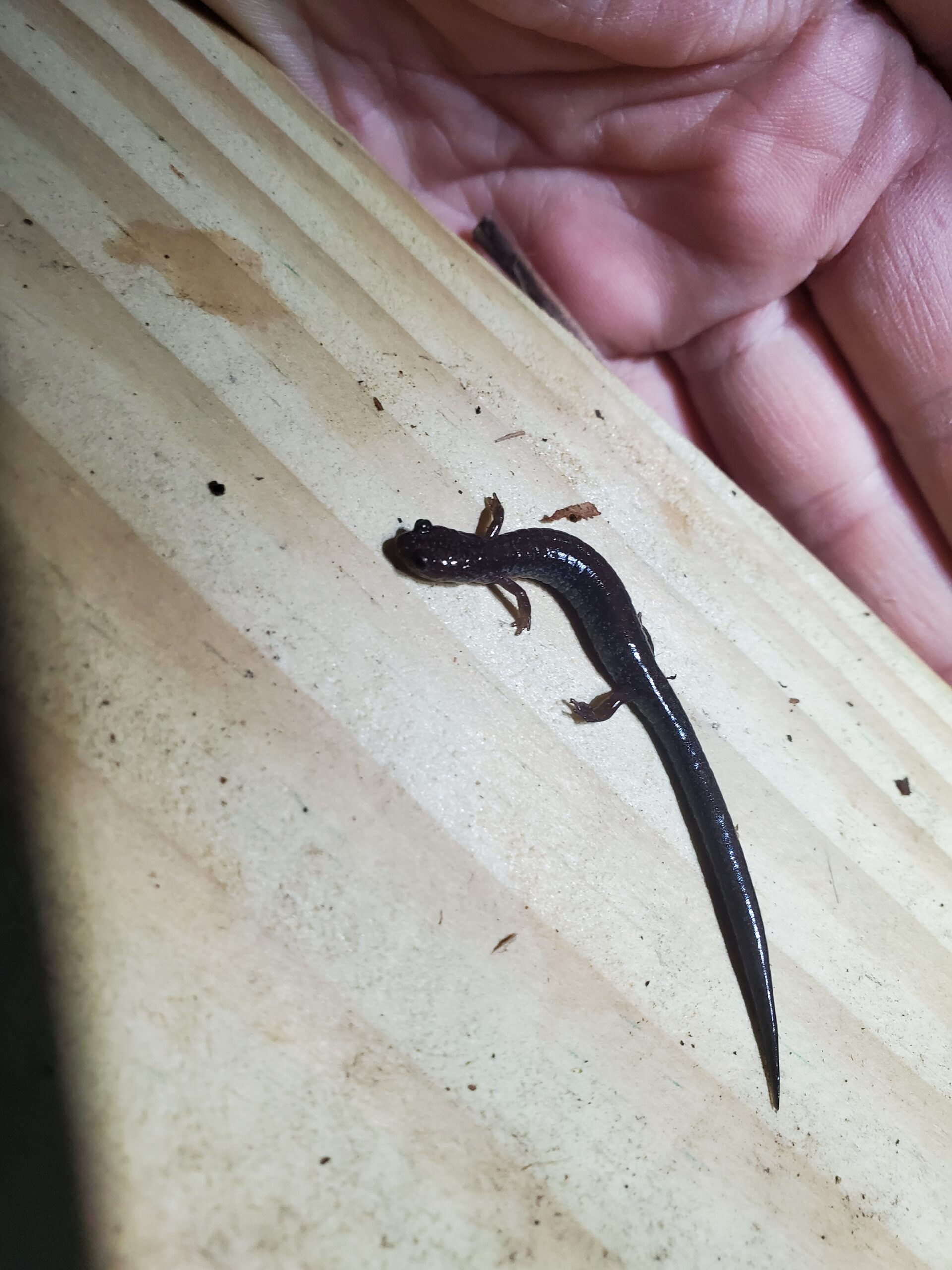
A four-toed salamander we spotted on the walk out to the nets on one of the warmer nights
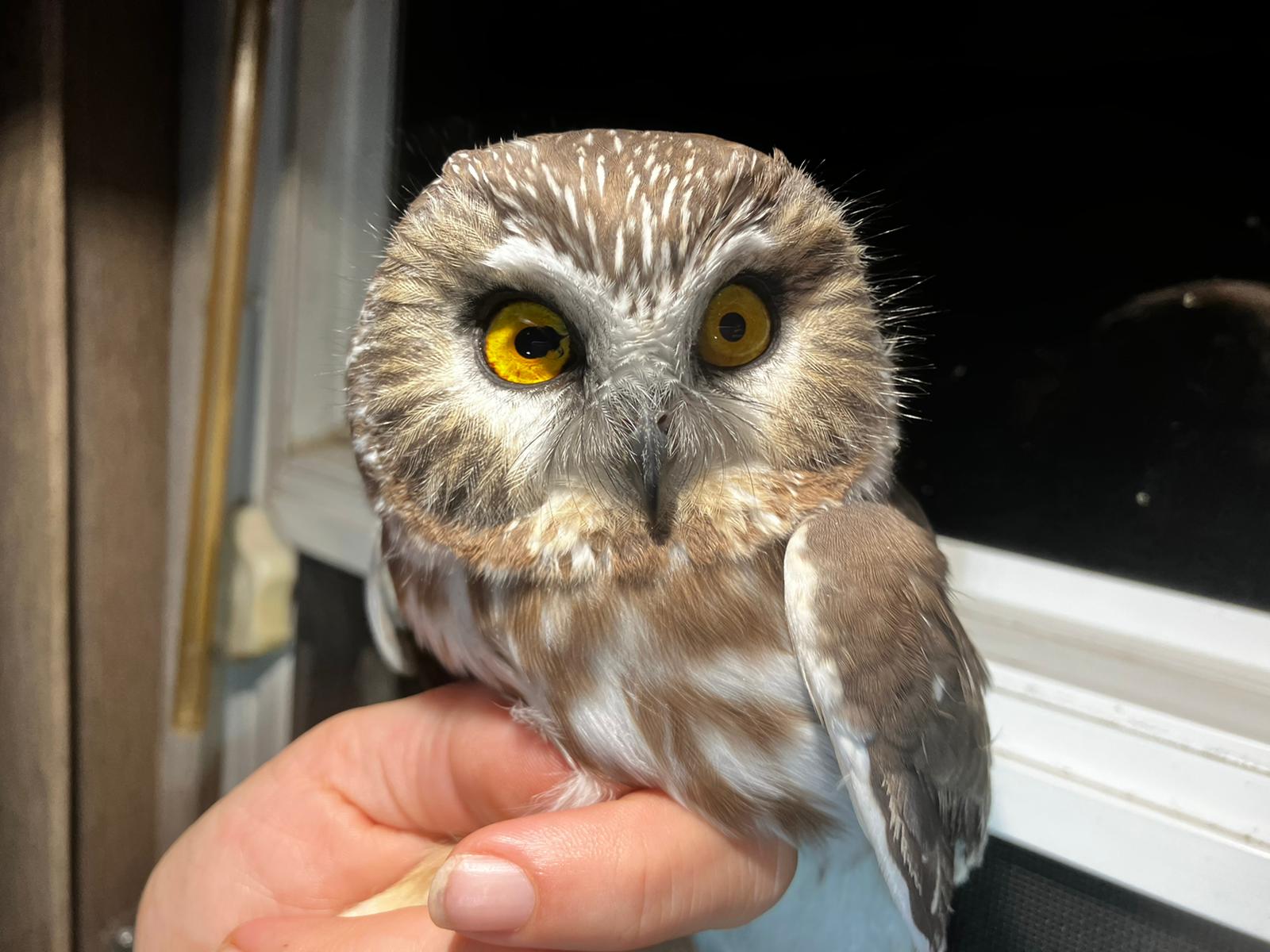
An adult Saw-whet we captured that had coloboma in one eye! It seemed to see alright, but we didn’t tag it, just to be safe.


